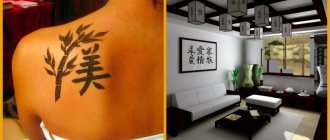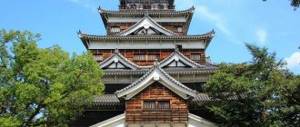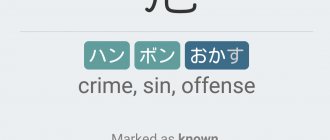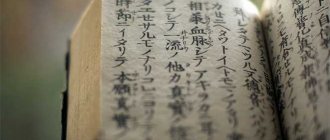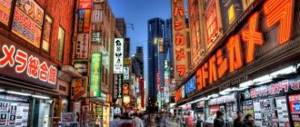On the Japanese island of Honshu, in the Kanagawa region, one of the oldest cities in this country, Kamakura, is located. The city is a resort with a fairly developed infrastructure. High mountain ranges covered with mighty forests surround Kamakura on all sides. In the south, the city is washed by the waters of Sagami Bay. Thanks to its optimal climate, Kamakura has become a wonderful resort town.
A Brief History of Kamakura
Why is Kamakura such a historical city? Firstly, this is literally and figuratively a very old city. Archaeologists have excavated in and around the city, showing that the first people lived here more than 10,000 years ago. Until the 12th century, Kamakura was a modest city. Before this time, several temples had already been built in the city, but not very many.
When the Kamakura shogunate settled in the city in the 12th century, everything changed. Suddenly the city became the center of the country. Historical research has also shown that around 1250 Kamakura was the largest city in Japan and the fourth largest in the world. This period ended when the shogunate was attacked and defeated in 1333.
Even after the Kamakura period, there is a rich history. The city was attacked again in 1526 and even largely destroyed. In the 19th century, many Buddhist buildings in the city were destroyed during a "wave of violence" against Buddhists.
In 1923, nearly 400 years after the city was completely burned in an attack, Kamakura faced a natural disaster. The earthquake and subsequent tsunami destroyed part of the city and many residents died. Like other parts of Japan, Kamakura was also attacked by the Americans several times during the terrible events of World War II. After this war and almost complete destruction, like the rest of the country, the city experienced a huge boom.
Engaku-ji Temple
If you don't like crowds of tourists, you can escape them at Engaku-ji Temple. Visiting this historic Zen Buddhist temple is like traveling back in time.
The second of Kamakura's five largest Zen temples was founded in 1282 by the regent of Kamakura, Hojo Tokimune (1215–1284). The main entrance is framed by a scattering of maples; There is a relaxing atmosphere here, which you will fully feel if you walk along the path to the Sammon Gate. Built in 1785, they serve as the main symbol of Engaku-ji Temple.
There are other places on the temple grounds to admire the autumn foliage. Also note the main Butsuden Hall and two National Treasures of Japan - the Shariden Hall, where the sacred tooth of Buddha is kept, and a large bronze bell with a height of 2.6 meters and a diameter of 1.42 meters. This is the largest bell in Kakamura City.
To visit this incredibly beautiful historical temple, which becomes even more stunning in the fall, you need to get off at Kita-Kamakura Station (if you're coming from Tokyo). Engaku-ji is located just a few steps away.
"Kyoto of Eastern Japan"
The city of Kamakura is also called the "Kyoto of Eastern Japan". Why? Well, like Kyoto, Kamakura is a cultural and historical city with countless attractions. Think large temples, beautiful statues and expansive gardens.
Buddhism in Kamakura
The above story does not yet explain the many temples and other monuments in the city. Kamakura is known as the birthplace of Nichiren Buddhism, a variant of the religion based on the ideas of the Japanese priest Nichiren (1222–1282).
The priest lived most of his life in Kamakura, but did not establish temples here. The temples in Kamakura were built only after his death. Unfortunately, Buddhism was not always seen as a positive addition to Japan. In the 19th centuries there was a lot of anti-Buddhist sentiment, which led to the use of force. As a result, many temples were destroyed or damaged. However, over the last century they have been repaired, restored or even completely rebuilt and built.
Mochi is a silent killer, meeting the sunrise, a bag of good luck. New Year's customs and traditions of Japan.
Attractions in Kamakura
As you might suspect, there is plenty to do in this relatively small town. There are countless temples that you can visit, various statues to admire. And there are also huge beaches!
What places do you really don't want to miss if you "visit" here one day, for example from Tokyo? Below we have listed a number of attractions for you to visit. In our opinion, you shouldn't miss this. Don't limit yourself to lists, however. Do you have more time in this interesting city? Then go and discover Kamakura!
Big Buddha (Daibutsu)
r
One of Kamakura's most popular attractions is the large bronze statue of Amida Buddha, also called Diabutsu. At 11.4 meters tall, the statue is the second largest bronze statue in Japan.
The best way to get to the statue is from the center by train (similar to the Moscow tram). Take the Enoden Line from Kamakura Station and get off at Hase Station. From here it's only a 5-10 minute walk. Note: Visiting Kotokuin and Diabutsu Temple is not free. You pay 200 yen for the temple and 20 yen for the Buddha statue. The Buddhas are open daily from 8 am to 5 pm.
Hokokuji Temple
In the hills and forests near Kamakura you will find the humble Hokokuji Temple. At first you don't think what such a small temple can show? After all, there are many other temples in and around Kamakura. Yet this temple has a lot to offer.
Hokokuji Temple resembles other temples in many ways. The temple has a modest gate, a small garden and a Buddha statue. What makes this temple unique is the large bamboo garden. Behind the large hall you will find a mangrove grove made of bamboo. In total, you will find more than 2,000 bamboo stems in the mangroves. It’s fun to walk along it, especially since you also see a beautiful temple among the bamboo; selfies will be unforgettable. This, coupled with the temple itself, means that a visit to Hokokuji Temple is definitely worth it.
Hokokuji Temple is unfortunately far away. If you want to visit the temple, you have two options. You can walk from Kamakura Station, which will take you half an hour. You can also take the bus, which only takes 10 minutes and costs 200 yen. Entrance to the temple itself costs 200 yen. Or take a photo of the bamboo and go to the nearest cafe.
Hasedera
Hasedera, or simply Khaze Temple, is a large Buddhist temple famous for the large wooden statue of the eleven-headed goddess Kannon, the goddess of mercy. This wooden statue is at least 9 meters long and is therefore one of the largest wooden statues in Japan.
Five things that make the Japanese work hard
The temple also has a small museum about the goddess in question. You need to pay extra for this. In this museum you can admire various statues and other valuable cultural and historical objects.
In addition to the statue and museum, you naturally have the temple itself. There is also something to see here. Thanks to the location, you have an expansive view of Kamakura from the various temple buildings.
Finally, the temple has a small restaurant where you can buy Japanese sweets, food and drinks. Hase Shrine is very easy to reach from Kamakura Station. This is actually the same route as Diabatsu, the two attractions are close to each other. So you can easily combine them.
From Kamakura Station, take the Enoden Line and get off at Hase Station. From here it is a 5 minute walk to the temple entrance. The temple is open from 8:00 am to 5:30 pm at the end of the day. Entrance to the temple is 300 yen, you pay an additional 300 yen for the museum.
Walk around the area
In Kamakura, of course, it's not just about temples and other monuments. No, the area itself is also very beautiful. The city is surrounded by hills, mountains and huge forests, by Japanese standards. Therefore, it is an ideal environment for walking! The great thing about the hiking trails here is that they connect several temples. Various walking routes take you through different temples! 3 walking routes are recommended. This:
Kotoku-in Temple
The Great Buddha statue of Kamakura (Kamakura Daibutsu) is located at Kotoku-in Temple. The bronze statue of Amit Buddha is one of the most important symbols of Japan, along with the legendary Mount Fuji, sakura and cranes. The height of the statue is 13.35 m, its scale is amazing. The Japanese government has designated Kamakura Daibutsu as a National Treasure. The ginkgo and maple trees growing around it reach the height of their beauty between early and mid-December.
Red maple leaves and golden ginkgo leaves create a wonderful backdrop for photographs and attract thousands of tourists to the Great Buddha every year. Surrounded by blazing autumn crowns, the statue looks truly monumental. In addition, Kotoku-in Temple is a sacred place for many followers of Buddhism, so during your visit, treat it with due reverence and respect.
Daibutsu Walking Course
The Diabutsu Walking Course is a walking route through the hills west of the city. This walking route takes you through various temples, including Kotokuin Temple and Diabutsu Temple. This walk takes a total of 90 minutes.
Tenensky walking course
The Tenen Walking Course is a long walking route connecting several temples in the hilly area north of the city. The pedestrian path is well marked, which means you can't get lost. During the walk you pass by various temples and tombs. Don't forget to donate to the temples.
Gyonyama Tourism Course
The Gyonyama Hiking Course is a slightly shorter route (<30 minutes) east of the city. The route connects the Yagumo Shrine with the famous tomb. While walking you have a wonderful view of the city. For the lazy and fat.
Enoshima
Enochisma is a small tourist island off the coast. The island is easily accessible from the center of Kamakura thanks to a bridge. There are several things you can do on the island. There are many beaches, an aquarium and even a watchtower. You will also find extensive gardens here where you can stroll. There is also a spa and temple on the island.
There is a special travel pass, Enopas. This is a combination ticket that gives you access to all attractions on Enoshima. The Enopass costs 1,000 yen, but will end up being much cheaper in the long run if you visit all the attractions. You can buy an Enopass at almost all tourist information points in the city.
Getting to Enoshima is easy, there are three ways to get there. From Kamakura, the best option is to take the Enoden line. With this train you will reach the island within half an hour.
The Economist finds Tokyo is the safest city in the world
Hase-dera Temple
Hase-dera is a Buddhist temple in Kamakura and also one of the best shrines in the Kanto region. Here you can admire not only the fiery red leaves of maples with the onset of autumn, but also the blooming of hydrangeas in the rainy summer season. The temple is famous for the wooden statue of the eleven-headed goddess Kannon, who represents the image of mercy in Shinto culture. Unlike Kamakura Daibutsu, this statue is not located in the temple courtyard, which means that to see it, you need to go to the main hall of the temple called Kannon-do.
When visiting Hase-dera, pay attention not only to the architectural ensemble of the temple, but also to the gardens lying on its territory. Parks, ponds with koi fish, Buddha statues - all this, framed by autumn leaves, will reveal itself in a new way before your eyes. Walk around the temple to experience the beauty of the current season. We recommend walking along the path to the main hall (Gannon-do) as it is lined with beautiful maple leaves. If you plan to linger on the temple grounds until dark, be sure to take in the beautiful view of the illuminated foliage.
From Hase Station it only takes 5 minutes to reach the temple. There are also signs along the route from Kotoku-in to Hase-dera to help you navigate your way.
Spend the night in Kamakura
Even though Kamakura is a small city by Japanese standards, there are more than enough accommodation options. There is something to be found in almost every price range. From cheap bed and breakfasts or hostels to luxury 4 and 5 star hotels. No matter which option you prefer.
How to get to Kamakura?
We already mentioned at the very beginning that Kamakura is ideal for a day trip from Tokyo. You can get to Kamakura from there within an hour. From Tokyo, the best option is to take the JR Yokosuka Line. This trip from Tokyo to Kamakura costs 920 yen.
Loved abroad, hated at home: the art of Japanese tattooing
Views: 2,601
Share link:
- Tweet
- Share posts on Tumblr
- Telegram
- More
- by email
- Seal
Hokoku-ji Temple
One of the best Japanese temples called Hokoku-ji (Japanese: “temple of bamboo”) belongs to the Rinzai school of Zen Buddhism. In comparison with the temples described above, this place will seem truly unique to you. Along with the splendor of autumn foliage, you can also admire the bamboo grove, which is located behind the main hall of the temple. Walking among the tall, thin stalks of bamboo, you'll be around the grove in just a few minutes. Thanks to her, the atmosphere of Hokoku-ji is strikingly different from that which usually reigns in the land of Buddhist shrines.
This temple may be quite small, but what it cannot be denied is its natural beauty. A variety of plants and trees grow on its territory, not all of which, however, shed their leaves. Despite this, autumn beauty is guaranteed. Under the canopy of colorful yellow and red trees lies a small, charming Zen garden. In short, for just 200 yen you can step into the lands of Hokoku-ji and explore it from A to Z.
Kencho-ji Temple
Kencho-ji is the first and oldest of the five largest Zen temples in Kamakura, built in 1253 by the regent Hojo Tokiyori. If this is your first visit to Kamakura, then be sure to head to Kencho-ji. Within the temple grounds you will find several beautiful Sammon Gates leading to the Bonsho Buddhist bell, which has been awarded National Treasure status. We also recommend exploring the Butsuden and Hatto halls. Just outside the main hall of Hojo there is a beautiful Zen garden, which looks truly magical with a backdrop of trees playing with all shades of red, gold and tan flowers.
